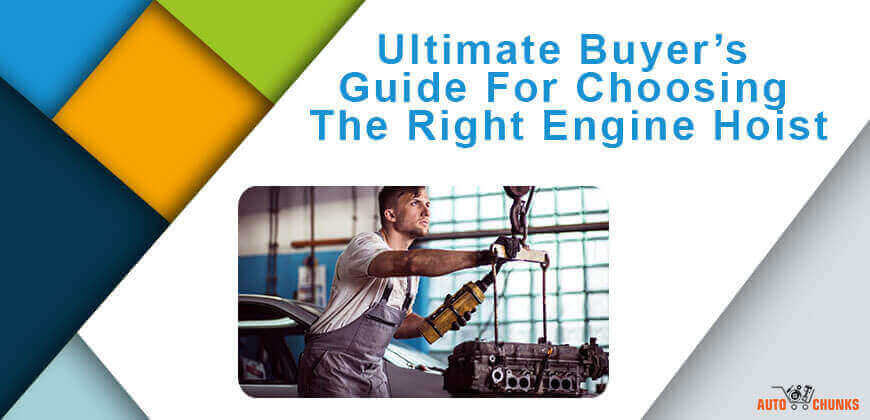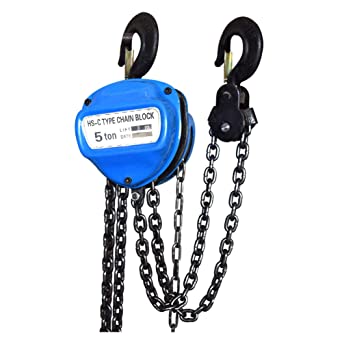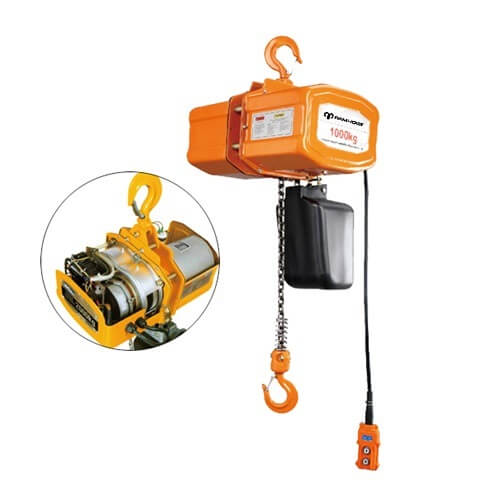Engine hoist is the tool that lifts the heavy-duty engine’s components, removes, or installs in the car. It uses in vehicle repair shops or industries for installing or uninstalling engines. Also, use for lifting or upgrading the engines. It helps in swapping the engine bay rehabs & other serious jobs that require real brawn. These cranes are a simple & efficient option for business owners as they are easy to operate. The engine cranes allow mechanics to safely & easily remove the engine for maintenance & replacement.
Lifting of an engine is one of the serious jobs. Hence you should select the best engine hoist that can fulfill your needs. The contractor has two important goals, i.e., complete the project in respective time & minimize the accidents on the job site by providing the safety tools. By choosing the equipment, the chances of accidents can be reduced. And it also completes your work in a timely. Hence, choose the equipment that eliminates safety dangers.
Choosing the right engine hoist that wouldn’t cost more is quite difficult. The engine hoist comes at many unique designs, sizes & prices. Hoists come in different prices and sizes. Some unique designs are foldable, telescoping, etc. It becomes more confusing. Hence, in this article, we are going to discuss some factors that help select the engine crane.
#1 What type of hoist should you choose?
First, you need to consider the right type of hoist. Engine hoists are of three types, such as hydraulic (lever hoist), electric & chain hoist (manual hoist). To lift the engine, the hydraulic hoist is one of the most popular ones. And the chain & electric hoist are beneficial for lifting the heavy-duty vehicle parts. Let’s look at each engine hoist’s specifics in more detail.
Hydraulic engine Hoist
Most car repair shops use the hydraulic engine hoist for engine lifting. It usually works with hydraulic cylinders that use hydraulic fluid for lifting purposes. The hydraulic system is fast, precise, powerful & reliable that helps in lifting extremely heavy loads. This hydraulic hoist works on the same principle as hydraulic systems. In this hoist, the engine is attached to the boom & can be lifted by adding more pressure. This process is done by pumping a special winch that is attached to a base of cylinders. It increases the oil pressure into the cylinder that leads to a force to lift the heavy-duty parts.
Hydraulic Engine Hoist is a type of Hoist which is made of heavy-duty steel construction. Most hydraulic engines have wheels at the bottom of tools. It comprises a foldable design with a set of legs that can be lifted upwards, an upright frame that can be lowered down, and an adjustable boom with a chain and hook. We used these in small garages and workshops. It can handle a maximum of 2 tons to lift the load.
Advantages of the Hydraulic engine Hoist
- Easy to port and fold
- You can easily customize according to the required size.
- It is certainly faster and will allow lifting a load quicker.
- Easy to operate and less expensive
Chain Engine Hoist
These hoists are like the electric hoist, but this mechanical device requires a manual force to lift the load. It comprises a pulley that is held together by a closed chain. We widely used these hoists in stores & shopping malls for lifting store equipment, different workshops & factories.
Chain Engine Hoist is a bunch of chains to multiply lifting force. It uses a gear system. By manually pulling one chain, it activates the gear and begins the lifting or hoisting process.
These gear systems engage with the links of a chain and use its gear ratio to multiply the lifting force as it applies to the hand chain by the client. And a chain lift has a stopping mechanism to keep the appended parts from lowering when the hand chain isn’t being pulled.
Advantages of the chain Engine Hoist
- Low enforcement
- Easy to operate
- Cheapest cost than Hydraulic engine Hoist
Electric Engine Hoists
It is another tool for lifting heavy-duty loads. Mostly electric cranes are used in sawmills, shops & different factories. This engine hoist works automatically, i.e., it does not require any manual force for lifting & transporting the heavier loads. These operate by pumping the winch to lift the hoist boom & then pulling down the chain to lift the load with the help of remote control. We used electric hoists in some factories and factories rather than in garages and workshops.
Advantages of Electric Hoists
- High more load capacity
- Cost-effective
- Less noise
#2 Weight Capacity
Weight capacity is one of the most important factors in selecting the right hoist. The rated capacity of the hoist should be higher than its expected load capacity to lift. Thus, before purchasing a hoist at a reasonable price, it is essential to find the weight capacity of a particular hoist. To find the weight capacity, you need to determine the state of loading. Thus, check for the engine’s weight & purchase the hoist accordingly. This quick web search helps nail down your engine’s heft.
The engine hoist can be folded when it is not in use. It can boast around 4,000 lb weight for its optimal performance. Different engines have different weights starting from 200 pounds, i.e., 90 kg. Some of the V series engines, like v10 & v12 engines, have thousands of pounds of weight. Hence, choose the engine hoist that has varying capacities. The hydraulic engine crane has weight capacities of 1 ton (2000 lb) & 2 tons (4000 lb), while the chain hoists have lower capacities such as 1/2 ton (1000 lb) to 1 ton (2000 lb). Choose the right hoist that can lift over 3 tons & 4 ton heavy loads. These hoists are more durable & made with high-grade steel materials, but they are more expensive.
#3 Power Supply
The power supply only applies to electric hoists, in which voltage can vary from region to region. Different engine hoists are depending on the variation of voltage. One is single-phase power-operated hoists & the other is three-phase power-operated hoists. The single-phase hoists are mostly used for lifting lighter loads around 500kg. And the three-phase hoist is most popular in factories & warehouses for lifting high-capacity loads. The single-phase hoist is used in workshops, garages & some light manufacturing companies.
Just like single-phase hoist, some electric hoists work on either 120vac or 230vac. But the three-phase hoist designs to work on 208,230,460 & 575v with 60Hz power. The three-stage power is more normal in processing the plants & stockrooms. It may require a high decision for lifting the load limit. Thus, it is more important to verify the power supply before choosing or specifying any engine hoist.
#4 Lifting speed
Every hoist works in the same way, regardless of their weight, time & speed & effectively lifts the heavy parts. The hoist works identical to the standard building crane of lifting the weight, move or lower. But the lifting speed may vary to different hoists. Lifting speed determines how much time the weight is lifted. It depends on the weight capacity. But it is only in the electric hoist.
In order to complete the lifting purpose, you need to adjust the lifting speed, daring the lifting process. By diving the MD1 wire rope into slow speed & rapid rise, the electric hoist can achieve uniform speed stability. The slow speed ratio makes your position accurately. It also balances the lifting products.
For electric hoists, lifting speed is one of the crucial factors in selecting the right hoist. For long lifts, the faster lifting speeds are considered, while for shorter lift applications, they complete a high number of lifting cycles in a relatively short time. Along with the required lifting speed, there is a hoist gear ratio that determines the torque requirement. It uses to determine the motor horsepower needs to provide that torque. Higher horsepower motors can increase the weight, size & power consumption of the hoist. The most common lifting speeds range from 8 to 32 FPM.
#5 Type of suspension or trolley
While considering the engine hoist, select the suspension that you want to use with it. The hoist can be suspended from a fixed location by using a top hook& can be mounted on a trolley. The fixed hooks are not allowing any cross travel movement. Apart from this, you should also consider the trolley. The trolley is used to move the hoist horizontally along the top or underside of the bridge girder of a crane. It can bear the heavily loaded engines with proper care & attention. Below we have listed different trolleys:
- Plain or push type trolley
- Geared trolley
- Motorized trolley
Along with this, there are three types of hoist suspension options.
- Hook mounted suspension: Hook suspension defines as the hook that remains fitted to the rolling system & manages the suspension. It means by using the hook, a person can simply lift the loads. However, there are two options available n hook mounted suspension, one is a swivel hook& the other is a rigid hook. The rigid hook makes the hoist more stable prevents rotatory movement. But the swivel hook twists the chain hoist based on your needs. It is more suitable for applications that require rotational movement.
- Lug mounted suspension: The lug suspension allows rigidity in your chain hoists & offers easily mountable solutions. You can use this suspension by using some tools & nuts easily. You can connect this mount with a hoist to the trolley, I-beam, or other support structure. To fasten the lug, you need some suitable pins or studs to hoist securely.
- Trolley mounted suspension: Trolley mount is another suspension type used for electric hoists. You can connect a hook, clevis, or lug hoist to a trolley by using suitable pins & studs. It allows traverse motion on low flanged of monorail beam, low flange bridge beam & top of bridge beams of overhead crane.
Conclusion
Nowadays, most companies use robotic hoisting machines. But they are not affordable to all the companies. You can choose the right engine hoist to meet their requirements. Hence, in this article, we have shared insight into some of the considerable points that take you before buying a hoist. Selecting the right equipment for your engine repair is good for safety. By choosing right over lifting equipment, you will do your work efficiently. Besides these factors, you can also choose the hoists with other features like mechanical brakes or overload limiters & many more.







Write A Comment